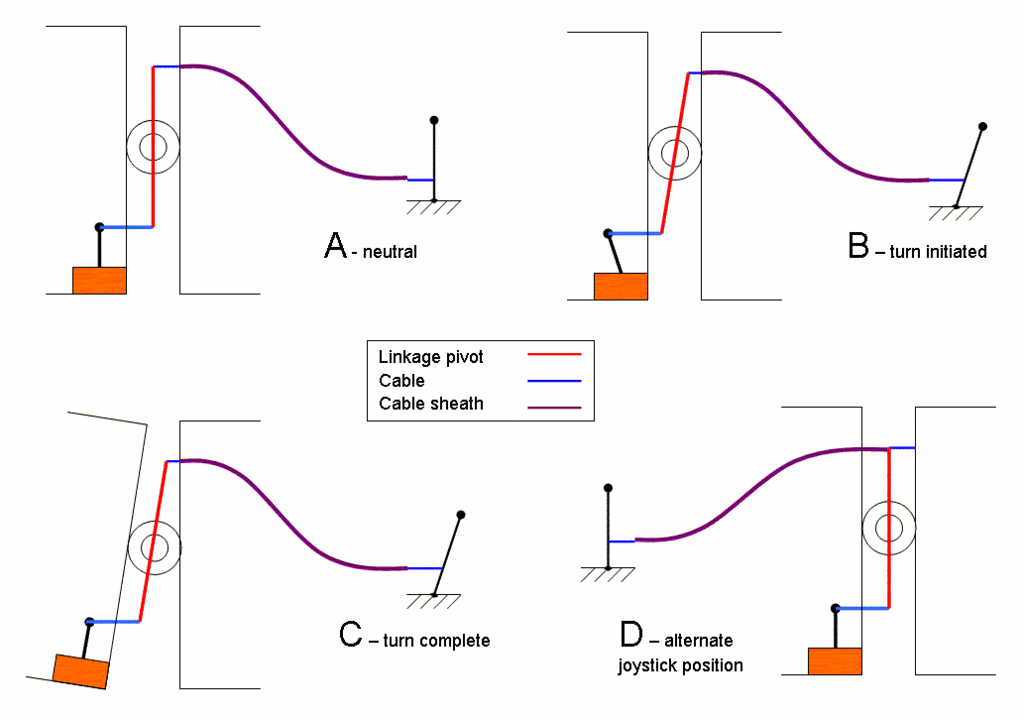Thanks hydromech. Yes, I'll give as many details as I can.
Ok, perhaps "position sensing" is the wrong term. I apologize if it is. What I'd like to accomplish is to have the joystick act in a very simular action as a steering wheel. By that I mean, let's say that travelling straight foward has the stick at 90degrees straight up. To turn right, I'd like to move the stick a certain amount and have the cylinders move an amount appropriate to the amount the stick was moved. Then stop turning and hold that position untill the stick is moved once again. Once the corner is negotiated, I can move the stick back to 90 and have the cylinders move accordingly. Much the same as a steering wheel would do.
By mounting the valve on the steering piece that moves different from the main frame, and operated the valve by remote cable or rod linkage, this can be accomplished. However, it would require considerable extra space and engineering. Also the plumbing would have to be considered as it would move with the valve and possibly strain the fittings too much. Especially if an obstruction such as a rock or piece of wood were to enter the mechanism.
The steering cylinders are double acting. They are sized right lengthwise for the job, so they do stroke their full length each direction. The machine I'm building is such that it will stand alone and be steered by means of "differentisl?" steering, and then when attatched to the secondary pieces, will be steered via articulation.
I can use a standard wheel and pump, but because I need the joystick to control speed anyway, I figured if I can integrate the articulating steering into the stick it would be just that much better as far as space and ease of building is concerned.
I hope that helps a little. I'm not an engineer, so I dont have the proper knowledge needed for expressing a question properly. If we are allowed to post links here, this should turn out a link to my project. It is posted on another board from time to time as I make a small amount of progress on it. If the link shows, it may help explain my situation a bit better.
Thanks.

